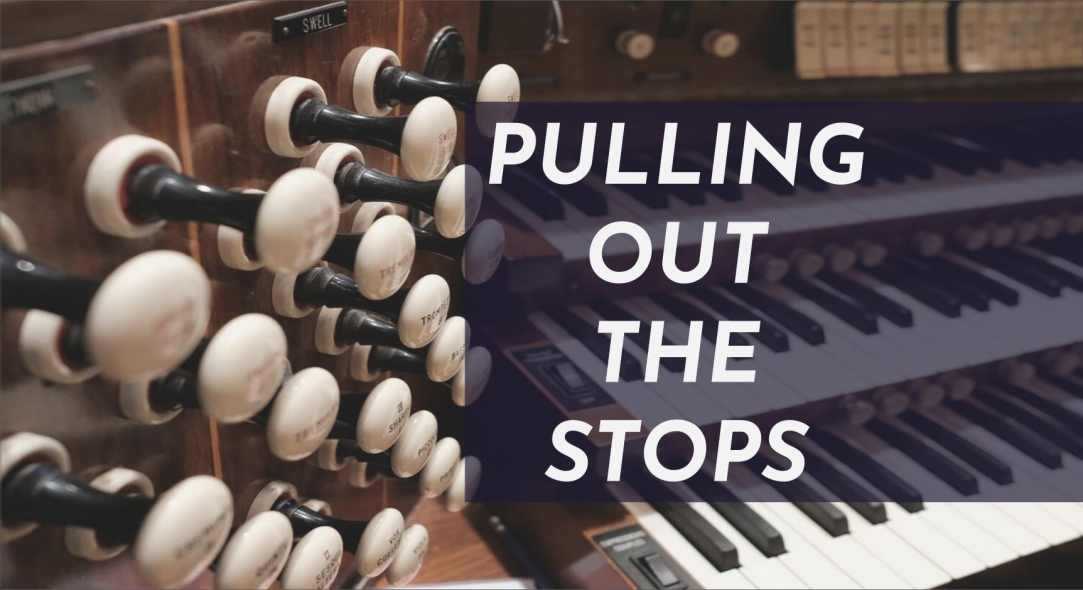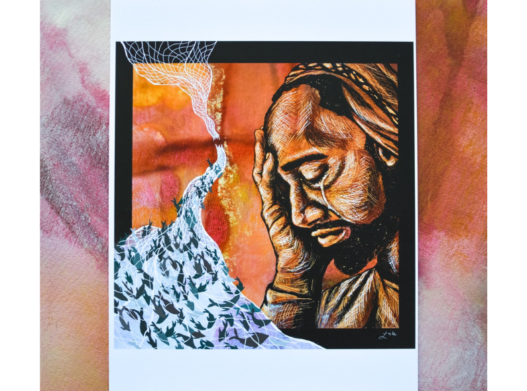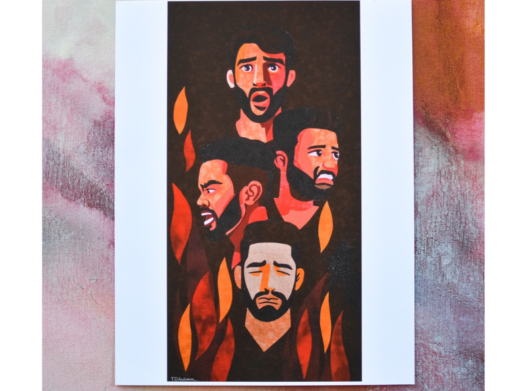The origins of earliest Church Music can be traced from it’s Judao roots, traveling through the development of Gregorian chant, and culminating in the Latin Mass. This is where our beloved Kyrie text originates, which numerous composers from Hildegard von Bingen, William Byrd, and Franz Schubert have set to music (and thousands more!)
Greek: Kyrie eléison (Κύριε, ἐλέησον)
English: Lord, have mercy
Greek: Christe eléison (Χριστέ, ἐλέησον)
English: Christ, have mercy
The origin of Church Music goes back to the early Christians and their roots in ancient liturgical music of Judaism. In the Old Testament, we read that official musicians at the opening ceremonies of the temple of Solomon (900 B.C.) were cantors, players of cymbals, harps, lyres, and trumpet. The writings of the Jewish Talmud list the Psalms as accompanied by plucked stringed instruments, with trumpet on breaks (Selah). But how were the Psalms sung? Jewish Cantors sang text on a single note, with simple melodic changes to go with the grammatical text, most often antiphonally. The early Christians would have been familiar with synagogue worship: readings from the Law and the Prophets, psalmody, teaching, prayer and final blessing. Although not documented by modern standards, it is most often assumed that the traditions of the synagogue were absorbed into Christian worship. References to antiphonal singing occur in the works of Eusebius (c260–c340), Bishop of Caesarea, and Tertullian (c155–c222), an early Christian author. Antiphonal singing may have appeared first among those Christians in closest geographical proximity to the Judaic roots of Christianity, but by the end of the 4th century, these methods of liturgical singing were common in Eastern Byzantium (Greek) and Western (Latin) churches alike. In this early example of the “Kyrie” text, we hear Ambrosian Chant by the famous composer, Anonymous. Listen to how each note fits with the each text syllable, and how the chant is sung antiphonally, first one singer, and then the group following.
From early Christianity, we continue on into the Medieval period: 5th-12th century, where Gregorian Chant was given its name in honour of Pope Gregory the Great, 589 to 604 A.D. Throughout the Medieval period, chant developed from simple text, one syllable per note, to more elaborate melodies. Each church, basilica, and chapel passed down it’s music aurally, and each was slightly different. An example of the development of chant text can be heard in the music of Hildegard von Bingen (1098 – 1179), an abbess, artist, author, composer, mystic, pharmacist, poet, preacher, and theologian. Listen to how one syllable is carried over numerous notes.
Within all these chant variations, the aural traditions of music were developed mainly through churches, monasteries and convents. The result was a system of 7 different church modes, or musical patterns, that the chants were sung in. These modes were similar to major and minor today, but with no concept of “home key.” The modes were named: Ionian, Dorian, Phrygian, Lydian, Mixolydian, Aeolian, and Locrian. You can picture a group of monks crowded around a rare and valuable book of music, where the lead singer would announce, “Kyrie in dorian mode,” and heavenly singing would occur (hopefully).
During all of this evolution and development in chant music, St. Benedict of Nursia (c. 480-530), abbot and founder of Italian monasteries, developed the Rule of Day, which became the Monk’s daily routine. In his book of precepts, known as “Order of St. Benedict” he lists:
Matins (morning) before daybreak
Lauds (praises) at dawn
Prime (at 1st hour) 6 am
Terce (3rd hour) 9 am
Sext (6th hour) midday
None (9th hour) 3 pm
Vespers (evening) about 6 pm
Compline (completion) end of the day
As time progressed from the 11th to 13th centuries, this Christian Mass became a mainstay in Monastic worship tradition. The public was now introduced to what the monasteries developed, and Churches, Chapels, and Cathedrals celebrated Medieval Mass. Here is an outline of Mass as it might have been celebrated in the eleventh century.
Introit –sung by choir
• Kyrie
• Prayers
• Gloria
• Versicle/response
• Epistle
• Gradual –choir
• Alleluia -choir
• Gospel
• Credo
• Offertorium
• Prayers
• Sanctus and Benedictus
• Canon of the Mass (Bread and Wine)
• Pater Noster (Lord’s Prayer)
• Agnus Dei
• Dismissal
Listen to this elaborate version of Renaissance polyphony, which William Byrd composed in 1592 for a secret Christmas Day Mass, held in the home of a devout Catholic. The music lines are based on the ancient craft of Gregorian chant, and elaborated on through the style of Renaissance harmony.
It is fascinating to ponder the years of musical development in the church. By listening to different versions of the Kyrie text, we can glimpse how Medieval chant changed and developed, with the Kyrie at it’s beginning. What does it mean to you now, to hear the Kyrie sung? We can hear it sung in the original ancient words, or in our own language. We can hear it in the music of Taizé, Church worship services, or on the concert stage. It is astounding and humbling to envision the prayer, worship, and community that have lodged in the experiences of humble singers, listeners, and composers, as they experienced the Kyrie text.
Listen to a youth choir sing the FBCH version of Franz Schubert’s German Mass, edited to English text by Richard Proulx, or scroll below to sing along with the original German text!
Search out your favorite versions of the Kyrie text, it is a bottomless well of inspiration.



